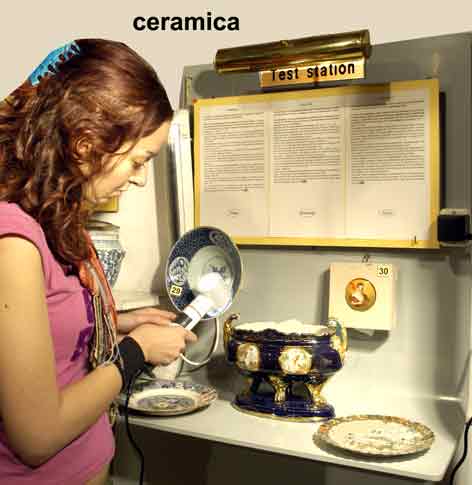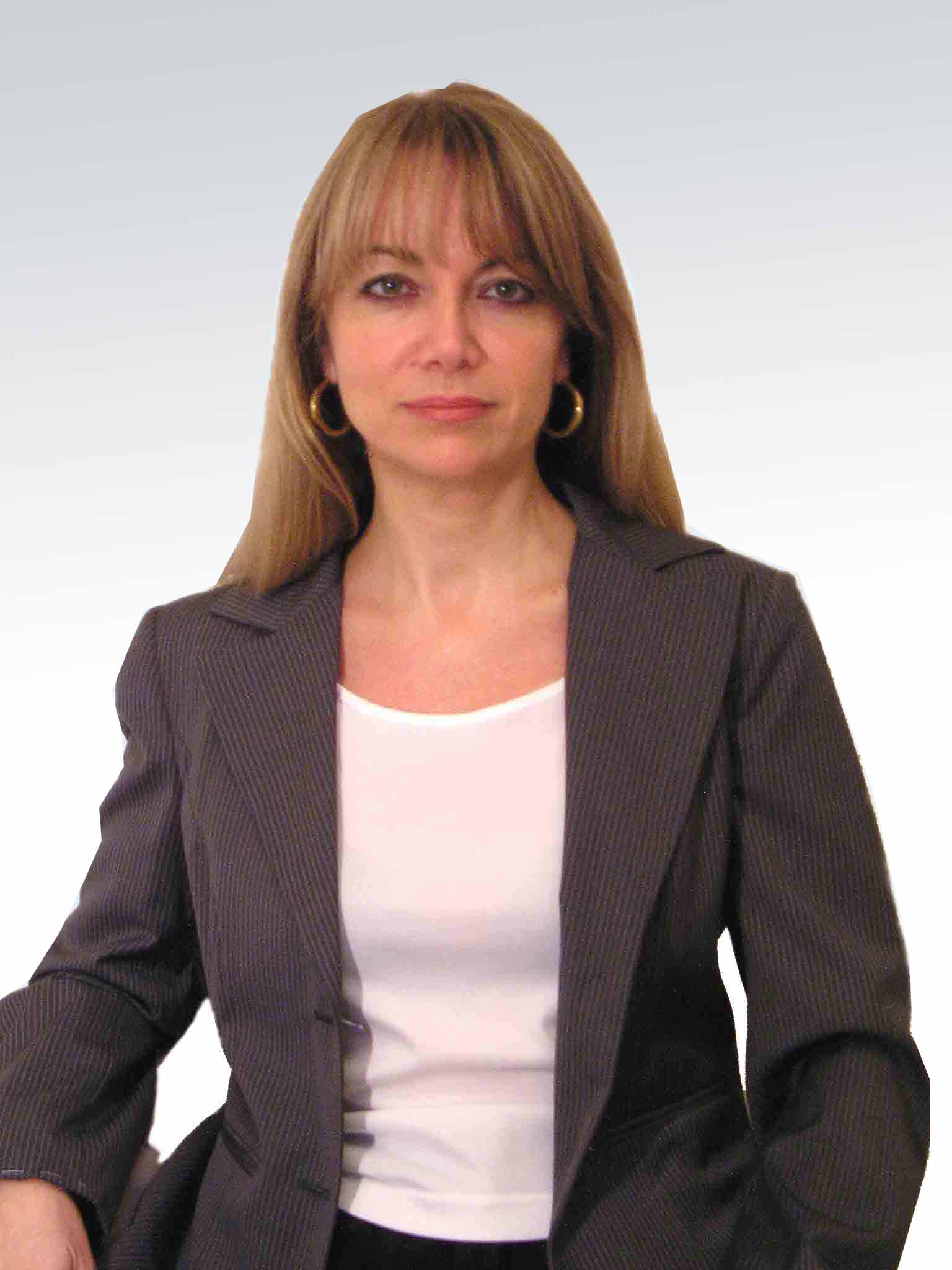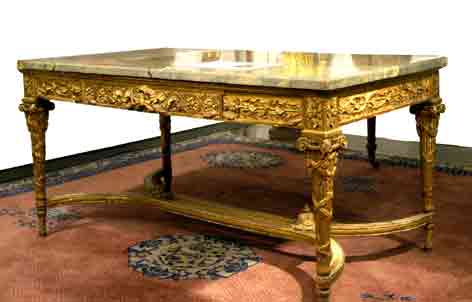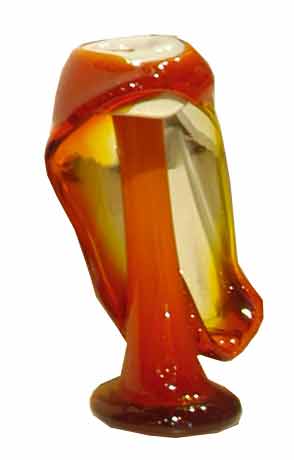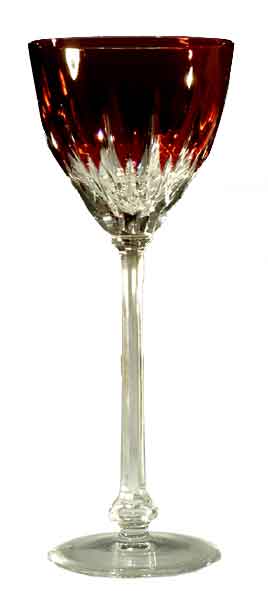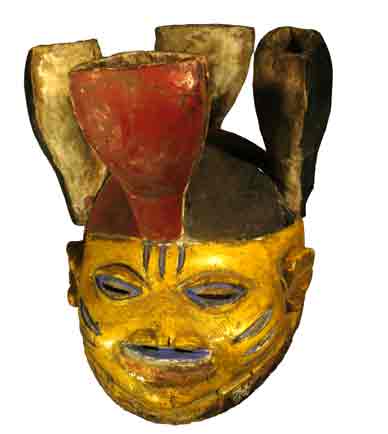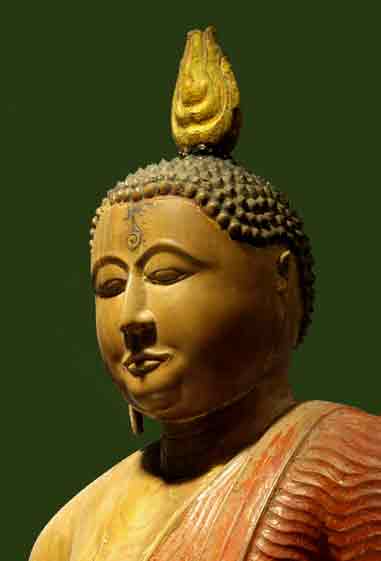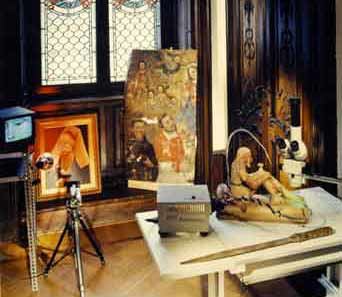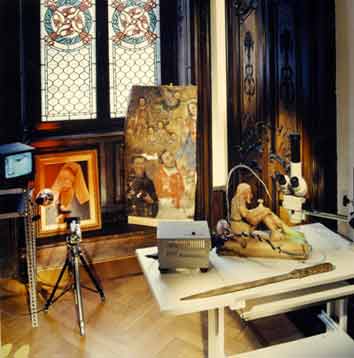Ascertainment of
authenticity in buddhist art.
Buddhist art has a very strict iconography.
Every gesture and form has a symbolic meaning which leaves little room to the
creativity of the sculptor.
For these reasons it is not easy to classify
chronologically objects of Buddhist art.
One criterion for judgement is offered by the
facial expression, if it has the mystical aura that only an artist who was a
believer could give, or the loving and patient execution of details like hands
or hair. Unbelieving forgers produce lifeless figures with insignificant
features and an empty gaze.
As regards scientific tests carried out on
Asian art works in bronze, wood and stone, the same rules and techniques apply
as those used for European objects made from the same materials. It must be
borne in mind, however, that Asians – and the Chinese in particular – take a
different attitude towards copies. For them, copying the masters of the past is
considered a virtue and surpassing them an honour. An honest copy is held to be
almost on a par with the original and commands a high price on the market,
particularly if it has substituted a sacred object in a temple or a monastery.
Fakes, instead, are produced for export. Objects made to be sold can be
recognized also by their excessive beauty and rich details, as well as their
unusually great size.
Judging authenticity on the basis of aesthetic
factors is made even more difficult by the fact that venerated statues in
Buddhist temples and monasteries, if damaged, were for the most part substituted
by copies which were made to look as similar as possible to the original.
Wooden items can be dated by the
spectroscopic method (www.spectroscopyforart.com)
Detailed information on our site
www.MuseoArteScienza.com
and in Volume 3 of our Museum’s handbook (pp. 81-97).
Ascertainment of the authenticity of carpets and tapestries
|
It is
relatively easy for an expert to tell whether in all likelihood a carpet is new,
old or antique.
The
establishing of exact dates, for really antique objects, is founded however more
on sensations or opinions than technical or historical bases, as the raw
materials, the dyes, the knotting technique and even the designs have not
undergone significant change over the centuries.
|
|
Old Oriental
carpets were often the only elements of furnishing, their centre representing the
centre of daily life. The most worn areas are therefore in this section.
Every kind of specific use
leaves a specific sign of wear, especially with prayer rugs, where damage can be
observed in the areas on which the knees rest. (1)
The
main starting points for evaluating the age of a rug or carpet are the
following:
-
Stylistic and technical comparison with antique carpets of certain dating.
-
Distinction between hand-knotted one-off items and machine-woven industrial
products.
-
Examination of the deterioration of the colours.
-
Observation of the signs of wear and their meaning. (Photo)
|
|
 (1) (1) |
|
Exhaustive
information on our site
www.ArtandScienceHandbook.com |
A scientific laboratory at the service of
art
|
The Museum laboratory’s mission is to improve existing scientific methods and
elaborate new methods for the ascertainment of the authenticity of art objects.
The laboratory’s instruments and know-how for the determining of authenticity are
at the disposal of collectors, art experts, restorers, art galleries and
museums.
(The staff of the laboratory, who speak
the main European languages, are at your disposal for any explanations).
The laboratory of the
Museo d'Arte e Scienza is a non-profit facility
and is independent from every point of view.
|
Tests carried out by the
laboratory:
|
Spectroscopic dating and characterization of
wooden objects |
Microscopic tests on
paintings, antique bronzes, excavated pottery, etc. |
|
 |
 |
 |
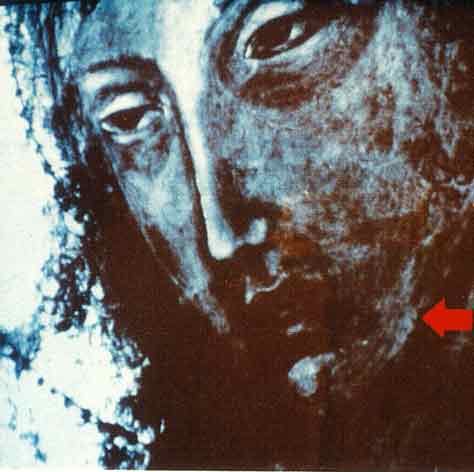 |
 |
|
Examination of underlying layers using infrared reflectography |
Analyses of paint layers with a duroflexometer |
Analyses with Wood’s light, UV and IR |
FURTHER ANALYSES PERFORMED IN THE LABORATORY:
Spectroscopic chemical analyses
on pigments, glues, encrustations, patinas,
products of corrosion.
Scientific, practical and instrumental tests of authenticity on:
ivory, amber, archaeological glass,
pigments, metals, stones, carpets, tapestry, prints, books, clocks and
watches, china.
|
PRICES:
the average cost of analyses is Euro 75 per test; some tests are
conclusive in telling fake and authentic items apart, such as wood dating
and tests on the encrustations on pottery and bronzes. |
SCIENTIFIC METHODS
Science has made
unbelievable progress in the last hundred years. The number of scientists and
researchers active today in every part of the world is greater than the sum of
all those who have occupied themselves with science from the origins of mankind
to the present day.
The possibility of
making new discoveries and perfecting existing methods has been greatly enhanced
by newly invented measuring instruments and, in particular, by the computer,
which permits the rapid processing of data.
The art market is
increasingly gaining in economic importance and it is only natural that new
knowledge is appropriated both by forgers and those who combat them.
If all art
objects worthy of being imitated were subjected to scientific tests, in the same
way as people undergo a check-up of their health, a very high percentage of
forgeries could be eliminated in many sectors of the art market and the partly
justified mistrust of the same overcome.
Described on the following
pages are scientific methods and processes
which can be applied in the wide and varied sector of antiques.
Optical methods
|
The magnifying glass
(up to 10
enlargements)
The
forger attempts to deceive the naked human eye. But deceiving a magnifying glass
in expert hands is practically impossible.
A simple magnifying glass is useful for
examining a patina and the surface of an object. For paintings, in particular,
it serves to investigate the craquelure, the canvas, the size of pigments and
other characteristics of the paint layer and the support.
The microscope
(up to 200 enlargements)
The
microscope permits enlargements which enable the structure of the
material, like the wood surface, the paint layer with its pigments and
many other materials, to be examined.
Even nowadays, notwithstanding constant
technical and scientific development, we can say that a magnifying glass in the
hands of an experienced expert is the simplest and most valid instrument for a
preliminary investigation.
|
IR
Spectroscopy
|
IR
spectroscopy has been used for decades in laboratories and industry for
chemical analyses. Recently it has started being applied for the dating
of wood (Patent G. Matthaes) in the field of art to establish the age
of furniture, painted panels, frames, statues, rafters and the like.
Moreover, the
spectroscopic measurement of the age of wood is not
influenced by the place of origin of the tree or by the climatic conditions
endured by the object over the centuries.
The precision
of the method presently varies from 10 to 20 years depending on the wood type
and its age.
A detailed
description of this method is presented on the website
www.SpectroscopyForArt.com and in the following pages.
|

|
The essentials in brief |
|
Infrared spectroscopy is
not a new method or a new discovery.
New is only its application for the ascertainment of age and
authenticity in art. It has been used for decades the world over by all
chemical and pharmaceutical companies with thousands of instruments and
with the same programme and equipment as the ones used by the laboratory
of the Museo d’Arte e Scienza. Its extreme reliability, accuracy and
facility of use have made IR Spectroscopy the number one scientific method
in all fields where it can be
applied.
Spectroscopic dating is based on two well-known factors:
ˇ
All the
natural materials on earth, including those used for creating art
objects, are compounds of specific molecules.
ˇ
Some
particular molecules undergo changes with the passage of time.
The
IR spectrum of wood shows its molecules or groups of molecules as peaks
and valleys (Figures 1, 2). Signs of age caused by evaporation,
oxidation and new combinations cause the lowering of some
absorption peaks and, to a lesser extent, a shift in the same
(Figure 3).
This dating method therefore permits two possibilities for the evaluation
of the spectrum, each one already offering good results singly.
1 – The graphic evaluation
of the curve (Spectrography)
Right from the start of this research, the spectrographic
measurement of the angle (α) formed between peaks of different heights
permitted a dating accuracy of +/-20% and these findings were
communicated at the time, around 1995, to a number of European museums
and institutes.
|
|
|
|
Figure 2
|
| |
|
|
Figure1 |
|
|
2 – The evaluation of frequency shifts (Spectroscopy)
The discovery of shifts
in absorption frequencies in spectroscopic analysis has boosted accuracy
over the years to an unexpected extent and was inexplicably high in the
first few years.
(Figure 3) -
The diagram on the right is only one example of the many characteristics
of a spectrum. |
|
|
At present we are attempting to trace
this accuracy, as well as independence from climatic conditions,
to biological programmes inside the cellular nucleus of the tree. The
incredible precision of these types of biological programmes in general
is well-known and understandable for the growth of wood. An answer to
the question why the ageing of wood must also be programmed can
be supplied only by the evolution of cellular research.
Tree cells,
unlike animal cells, are highly protected by a wall of
cellulose, a hydrocarbon. Cellulose is extremely resistant to water
and wood cells as well as datable wooden material can still be found in
excavated Roman ships.
|
|
|
|
Figure 4
Research in collaboration with a German
archaeological museum (1995). |
|
Generation of reference tables to relate spectrum data to wood age:
The assignment of a
spectrum to a specific wood species and to a specific age required the
measurement of a great quantity of wooden objects of certain dating.
This research, which called for many years of work on the part of
qualified personnel was made possible only by the close and benevolent
cooperation of international museums which began around 1993. The
collaboration of some art museums terminated around 1995, since their
curators feared there could be negative
consequences for their collections. The Gottfried Matthaes Foundation,
proprietor of the Museum, is, like the P. Getty Foundation, a non-profit
organization at the service of art. Our cooperation with technical
museums has continued.
The application of spectroscopic analysis for the dating of organic
materials is patented
(It. Patent Nr. 01266808 - G. Matthaes, 1993)
|
The
radiocarbon method (carbon -14)
|
At its appearance,
the 14C method was hailed as a prodigious tool for the absolutely
certain determination of the age of antique objects and thus a valuable arm in
the fight against forgers.
This method permits
the dating of organic material containing carbon, such as
wood, fabrics, hair, ivory, coal, coral, leather, shells, forged
iron, paper, etc.
The method is
based on the following scientific theories:
In the
Earth’s atmosphere natural carbon occurs in three isotopes: 12C,
13C
and
14C.
Only the last is radioactive and therefore unstable and its decay
measurable.
14C
is continuously created in the upper atmosphere through the effect of cosmic-ray
bombardment and reaches the Earth with the rain. All forms of life, whether
plants or animals absorb in the course of their existence, through water, also
the 14C isotope which is incorporated in their bodies and therefore
also in fibres of wood. At their death, this absorption ceases and the 14C
is slowly transformed into 12C. The rate of
decay is known to us and has been recorded in detailed tables, variously
rectified and corroborated.
|
|
Diagram 1
shows the curve of this decay period. The creation and concentration of 14C
in the atmosphere has undergone considerable fluctuations over the centuries.
There are uncertain periods, owing perhaps to the activity of the sun and
oscillations in the magnetic field. The development of 14C
in the Earth’s
atmosphere has been subject to such wide variations that measurement data
concerning these periods cannot be interpreted.
The uncertain periods unfortunately
coincide with two of the most important eras from an artistic point of view: the
centuries of the Greek civilization and the last 350 years of our history.
|
 |
|
The method is
therefore not applicable for antiques created after about 1650, which
unfortunately comprises the majority of those offered by the market.
Summing up, we can
safely affirm that the 14C method is reliable above all for the
examination of archaeological samples, or in any case objects which are very
old, and represents a relatively accurate and certain dating method in this
field.
These tests are best
carried out in the laboratories of leading universities. They are, however,
comparatively expensive.
The most important fields of application in antiques are wood and other organic
substances like glues, bone, ivory, etc.
|
Comparison
between the two scientific methods which can be applied for the dating of wooden
objects: IR molecular spectroscopy and radiocarbon (14C)
Their
applicability is illustrated in the following table:
|
Supposed age of the object |
|
Accuracy
of method |
|
age in years
|
|
Spectroscopy
|
|
14C
|
|
0-50
50-350/400
350/400-750/850
750/850-2000
more than 2000 |
|
quite good
good
good
perfectible*
inapplicable up to now
|
|
good
inapplicabile
good
good
relatively high
|
|
* Currently only for the most commonly used woods |
Dendrochronology or
tree-ring dating
The counting of
growth rings is one of the most accurate methods for the absolute dating of a
piece of wood, as long as the exact place of growth of the tree it was taken
from is known.
Back in school we
learnt that the age of a tree can be calculated by counting the rings in its
sawn trunk: each ring, consisting of a light area and a dark area, represents a
year’s growth.
If an old piece of
wood is found, for example in a piece of furniture, with a sufficient number of
tree rings on it, it should be possible to establish his age by
comparison with the table of tree-ring sequences.
Theoretically,
dendrochronology is the most accurate method for dating wood. In practice,
growth rings present many drawbacks.
Given that their
widths are influenced exclusively by the climate in which the tree grows and
climate varies not only between Spain and England, but also between the north,
the centre and the south of England, or between a valley or a hill, specific
tables must be elaborated for each of these areas. To begin with, therefore, it
is necessary to know fairly exactly where the tree grew.
|
A great limitation
consists also in the fact that only a few types of trees, like for instance
oaks, develop growth rings and that in order to be able to count them it is
necessary to have a rather large piece of wood available.
Dendrochronology is an
exact science for studying the climate of a specific region and dating wooden
objects of such provenance. It is a generally accepted opinion that this method
is not suitable for reliably dating a single antique object in wood.
|
|
 |
The thermoluminescence method
for establishing the authenticity of excavated
objects
The thermoluminescence method has
been used with success all over the world for a number of decades. There is a
vast bibliography, both in print and on the Internet, on the advantages and
limits of the method.
Thanks to thermoluminescence, it is possible
to tell authentic excavated items from recently manufactured fakes with
reasonable accuracy.
Some doubts have been
cast, however, on this very positive feature ever since the discovery of the
method, for the following reason: a number of crystals contained in the subsoil
are radioactive and the radiation they emit is absorbed by specific crystals,
mostly quartz crystals, contained in the terracotta of the buried objects. The
amount of radiation absorbed depends mainly on the length of time they lie
buried under the earth, and is measurable.
It is possible for fakers to expose newly-made
pottery to artificial radiation sources, thus fooling the measurement
instruments. But producing fakes with the use of scientific methods calls for
expertise on the subject and expensive instruments, and in fact up to now it has
been fairly easy to identify this kind of artificial radiation. It is only a
question of time, however, until the artificial radiation method is mature for
mass production. From that moment onwards, in order to obtain reliable results,
it will be necessary to supplement thermoluminescence measurements with further
tests.
Certainty is offered by an examination of
the encrustations which generally cover the ceramic surface, a method, used at
the naked-eye level, as old as archaeology itself. Today it is possible to carry
out this test easily using spectrography, which can distinguish with great
reliability between artificially produced encrustations using cement, earth and
glue from the authentic mineral salts which have formed over centuries
underground.
Reflectography
Infrared
Rays and IR Reflectography
Infrared radiation
is characterized by the length of its waves, which penetrate deeply into
matter. This phenomenon can be seen at sunset, for instance, when the very
long red light waves manage to pass through the dense atmospheric haze filled
with dust and smoke, whilst the light of other colours with shorter
wavelengths are absorbed. In an oil painting, for instance, infrared
rays can penetrate the paint layer and, if this is thin, can reach the white
priming. This is the technique applied in modern IR reflectography.
This technique is
very important for establishing whether a painting is an original work or a
copy.
In most cases a
professional painter makes a preliminary sketch of the contours of his figures
in charcoal or lead pencil on the prepared canvas.
If, for
example, a copyist has traced a grid to help him get the proportions of the
painting right, the black lines, detected by the camera’s sensor, show up
clearly on the screen.
Every painter
develops a personal style. An expert is able to recognize an artist’s hand
simply by observing a sketch or a drawing. By means of reflectography it is
possible to see the sketch that served for the future painting.
The
penetration of rays permits moreover to examine the craquelure into the depth of
the painting layer.
|

in depth |
|

on the surface |
|
Ultraviolet (UV) and infrared (IR) light
|
|
The human eye sees
only a part of the vast colour palette of light.
Physically speaking, colours are electromagnetic waves that oscillate at a given
frequency.
The colours received
by the eye and interpreted by the human brain are limited. They lie at the
centre of a vast range of electromagnetic frequencies.
In the invisible
region of the spectrum, which comprises the long frequencies, we find
also infrared (IR) light and in the region of the short wavelengths,
ultraviolet light.
The invisible
colours are precious elements for investigating authenticity,
as copyists and forgers do not realize that the material they use can betray
them thanks to the use of a light they cannot see.
Using a camera with
special films, all the specific effects produced by IR and UV lamps beyond our
field of vision can be captured and then examined in printed photos.
The examination of
a painting should be done with three types of light: IR, UV and Wood’s, all of
which are easily carried out.
|
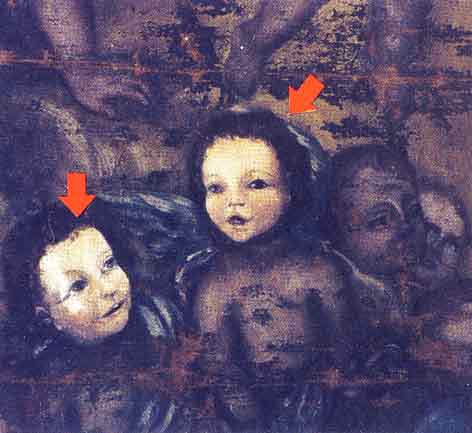
With the help of UV
light, it is possible to detect a recent restoration
with industrial colours, through their use of synthetic binders
|
Visible
monochromatic light rays
|
|
Sunlight looks white
to us because our eyes are used to perceiving the sum of all the frequencies of
the colours that the sun emits as white. If, instead, we light
any object with rays of a single colour, it loses its beauty and details stand
out which had previously escaped the notice of the observer fascinated by the
spectacle of its colours. The most commonly used monochromatic light source is
sodium vapour, which is pure yellow. |
|
Wood’s light
|
|
Wood’s light rays
differ basically from others in that they excite certain molecules, thereby
creating fluorescence. This means that
the
material not only reflects light but gives off a light of its own.
The test with
Wood’s light does not only change the colours, but produces new shades of
colour.
The fluorescence method is a very important research tool. It
makes it possible, for example, to tell real pearls from artificial ones and
real amber from amber made from synthetic resins, as well as to detect false
gemstones and enamelwork, restorations made to furniture, and so on. |
|
 |
|
The protective layer observed with Wood’s
light |
|
Examining the inside of paintings with Röntgen rays
|
|
These rays penetrate
through solids and reveal what even the finest experts cannot see. An
examination by X-radiography does not generally require specific laboratory
equipment. The X-ray machines doctors usually have in their studios are all
suitable.
What can be
detected are changes made either by the painter himself or by the restorer.
In some cases
examinations with X rays permit the discovery of an older painting underneath
the visible one.
Without
the possibility of making broad comparisons, the X-ray of a single painting
gives few clues
as to the
hand of the painter. |
|
Pigmentography
|
|
With the help of a
microscope it is possible to distinguish pigments by their colour, their
crystalline form, their opacity and their purity.
The spectroscopic
method
allows us to determine with certainty the single molecules of which the pigments
are composed. The peaks of the curves signal the presence of copper and oxygen
(in the azurite blue pigment) and lead (in the white lead pigment).
|
|
Further techniques
for analysing pigments are: X-ray fluorescence analysis,
scanning electron microscopes and
atom
absorption spectrometry.
The
application of these methods is valid for almost all materials to be found in
the antiques trade and permits specific examinations. |
Museo
d'Arte e Scienza -
Museum of Art and Science
(18
rooms and over 2,000 items on display)
- Milan
|
Opening hours: Mon-Fri: 10:00-18:00
Entrance: Euro
8 - reduced Euro 4
Guided tours: (min. 10 people) Euro
10 |
 |
via Q. Sella,4 -20121 Milan
For
Information:
Tel:+390272022488. Fax:+390272023156.
e-mail:
info@museoartescienza.com |
Sections of the "Museo d'Arte e Scienza": 6 rooms dedicated to
the ascertainment of authenticity in art and antiques, 5 rooms
on Leonardo da Vinci's "Treatise on Painting"
and his activities in
Milan, 5 rooms dedicated to African Art and Buddhist Art, 2 Scientific
Laboratories
|
Fully aware of the many intrinsic difficulties involved,
and eager to help lovers
of antiques, G. Matthaes has been
working for over twenty years on the compilation of a reference work
capitalizing on the experience accumulated over the years in over fifty
books written by expert restorers and antique dealers in various
languages, integrated by continuous updatings and new research carried
out by its scientific laboratory.
The result of these studies is the "Art Collector's
Illustrated Handbook" which, with its clear and persuasive information,
concisely presented and richly illustrated, guides the reader
as to how to recognize authentic art objects.
www.ArtAndScienceHandbook.com |
|
OTHER
SITES OF THE MUSEO D'ARTE E SCIENZA:
|
www.MuseoArteScienza.com -
Sections of the
"Museo d'Arte e Scienza": 6 rooms dedicated to the ascertainment of
authenticity in art and antiques, 5 rooms on
Leonardo da Vinci's "Treatise on Painting"
and his activities in Milan, 5 rooms dedicated to
African Art and Buddhist Art, 2 Scientific Laboratories.
www.LeonardoDaVinciMilano.com -
Two permanent exhibitions: "Leonardo Citizen of
Milan" and "Appreciating Art through the Eyes of Leonardo" from his "Treatise
on Painting".
www.AuthenticAfricanBronzesandCeramics.com
-
Dedicated to the authenticity of African artworks in bronze, stone and
pottery. The scientific laboratory of the Museo d’Arte e Scienza has
developed valid methods for telling authentic African objects from copies
and fakes.
www.ArtAndScienceHandbook.com
-
The most complete and scientifically valid guide
to ascertaining the authenticity of European and non-European antiques on an
objective basis (540 pages and more than 2,000 colour illustrations in 3
volumes and 3 languages).
www.Paintingsauthenticity.com -
Information about the authenticity of modern paintings and antique paintings.
www.AntiqueFurnitureAuthenticity.com -
A list of possible
methods for determining the authenticity of furniture based on objective
factors.
www.Excavatedartauthenticity.com
- "A list of all the
possible ways of determining, on the basis of objective factors, the
authenticity of excavated pottery, glass or bronze items from Southern Italy,
the Mediterranean Basin, China and South America.".
www.AfricanArtAuthenticity.com -
"Art and Life in Black Africa", The
African Art didactic section of the Museum (5 rooms and over 350 objects).
www.SpectroscopyforArt.com -
A
scientific method for the dating of the wood and identification of the wood
type used for art objects. Determination of their authenticity through
analysis of colours, binders, pigments and other organic substances.
www.Matthaes.org
-
The history of
the G. Matthaes Foundation from the opening of the painting school
in Dresden in 1906 up to the Museum "Arte e Scienza" in Milan.
www.IvoryAuthenticityAndAge.com
- Ivory, bone and horn can
now be spectroscopically dated and accurately identified.
www.LeonardoTeacherofPaintinginMilan.com
-
An abridged and illustrated edition of the “Treatise on Painting”.
JOIN OUR MAILING LIST TO RECEIVE OUR NEWS! |
















